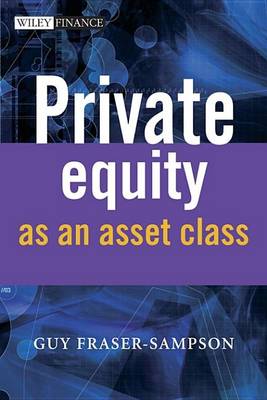The Wiley Finance
2 primary works • 3 total works
Book 333
The book explains that instead of asset allocation being set in an isolated and arbitrary fashion, it is in fact the way in which specific hurdle investment returns can be targeted, and that this approach is already in use in the US (and has been for many years). It involves extended and detailed financial analysis of various asset class returns and proposes a five-asset class approach for future use. Opening with a study of the historic asset allocation practice of UK pension funds, the book shows how the current approach has led to the present funding crisis. It goes on to compare and contrast the UK approach with that of the US and to propose a new approach to UK asset allocation: the five asset class approach ("MAC Investing"). The book reviews and analyses different asset classes based on historic returns, examines risk, and concludes with a suggestion of the five asset classes to use; Quoted equities (both Domestic and foreign), hedge funds, private equity and property. This book also includes benchmark performance figures never previously published.
Book 632
Unfairly reviled, and much misunderstood, private equity differs from all other asset classes in various important respects, not least the way in which its fund mechanisms operate, and the way in which its returns are recorded and analysed. Sadly, high level asset allocation decisions are frequently made on the basis of prejudice and misinformation, rather than a proper appreciation of the facts. Guy Fraser-Sampson draws upon more than twenty years of experience of the private equity industry to provide a practical guide to mastering the intricacies of this highly specialist asset class. Aimed equally at investors, professionals and business school students, it starts with such fundamental questions as what is private equity? and progresses to detailed consideration of different types of private equity activity such as venture capital and buyout. Rapid and significant changes in the environment during the recent financial crisis have prompted the need for a new edition. Separate chapters have been added on growth and development capital, as well as secondary investing.
Newly emergent issues are considered, such as lengthening holding periods and the possible threat of declining returns. Particular problems, such as the need to distinguish between private equity and hedge funds, are addressed. The glossary has also been expanded. In short, readers will find that this new edition takes their understanding of the asset class to new heights. Key points include: * A glossary of private equity terms * Venture capital * Buyout * Growth capital * Development capital * Secondary investing * Understanding private equity returns * Analysing funds and returns * How to plan a fund investment programme * Detailed discussion of industry performance figures
Newly emergent issues are considered, such as lengthening holding periods and the possible threat of declining returns. Particular problems, such as the need to distinguish between private equity and hedge funds, are addressed. The glossary has also been expanded. In short, readers will find that this new edition takes their understanding of the asset class to new heights. Key points include: * A glossary of private equity terms * Venture capital * Buyout * Growth capital * Development capital * Secondary investing * Understanding private equity returns * Analysing funds and returns * How to plan a fund investment programme * Detailed discussion of industry performance figures
The investment landscape has changed dramatically over the last few years, destroying many of the old certainties by which investors lived their lives. In particular, it has shaken belief in the ability of traditional asset types such as bonds and equities to protect them from abnormal market conditions, and it has brought home how closely correlation between different markets can be squeezed together by extreme pressure. Future investors will have to regard so-called "alternative" assets as essential elements within their portfolios, and be prepared to deal with the complexities that this will entail. This will in turn force a re-appraisal of core concepts such as "risk" and "return", not least because some alternative asset classes do not lend themselves well to traditional return measures. Exciting times lie ahead, but a thorough working knowledge of the various alternative asset classes will be an essential pre-requisite to success, and perhaps even to survival. Alternative Assets meets investor's need for a guide on where to allocate in this new climate.
It provides investors with a primer on each alternative asset class, as well as practical tips on the pros and cons, implementation, returns analysis, fees and costs. It also offers introductory guidance on how to set investment targets, and how alternative assets can be accommodated within the allocation process. Each chapter gives useful background knowledge on a particular asset type, including a discussion of whether a satisfactory beta return level exists and, if so, the different ways in which it might be accessed. Written by best-selling author Guy Fraser-Sampson, this book guides investors through the new look alternative investment arena, providing post-financial crisis perspective and investment advice on the alternatives landscape.
It provides investors with a primer on each alternative asset class, as well as practical tips on the pros and cons, implementation, returns analysis, fees and costs. It also offers introductory guidance on how to set investment targets, and how alternative assets can be accommodated within the allocation process. Each chapter gives useful background knowledge on a particular asset type, including a discussion of whether a satisfactory beta return level exists and, if so, the different ways in which it might be accessed. Written by best-selling author Guy Fraser-Sampson, this book guides investors through the new look alternative investment arena, providing post-financial crisis perspective and investment advice on the alternatives landscape.


